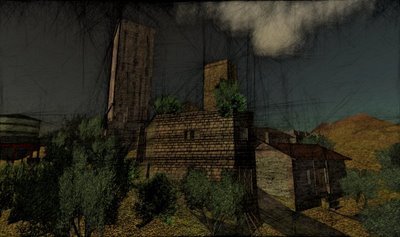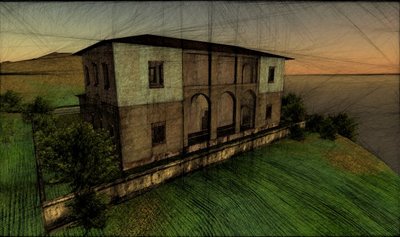Antidepressants Hardly Help

A new debate is sparked over the effectiveness of anti-depressants
Popular antidepressants including Prozac and Paxil have little impact on most patients, according to a comprehensive review of newly released data from trials that were conducted before the drugs were approved in the U.S.
Researchers from the U.K., U.S. and Canada analyzed results for fluoxetine (better known by the brand name Prozac), venlafaxine (Effexor), nefazodone (Serzone) and paroxetine (Paxil or Seroxat) — all members of a class of drugs known as selective serotonin reuptake inhibitors (SSRIs). The researchers’ paper, published this week in the journal PLoS Medicine, claims that only patients who are diagnosed “at the upper end of the very severely depressed category” get any meaningful benefit from the widely prescribed drugs. For the others, the paper says, antidepressants are barely more effective than a placebo (although patients suffering from depression, like those suffering from chronic pain, generally do see a substantial placebo benefit).
By LAURA BLUE/LONDON, Tuesday, Feb. 26, 2008, time.com
The creation of the Prozac myth
In the 20 years since its launch, 40m people worldwide have taken the so-called wonder drug - but research revealed this week shows that Prozac, and similar antidepressants, are no more effective than a sugar pill. So how was the myth created? Psychoanalyst Darian Leader traces the irrepressible rise of the multibillion dollar depression industry, while others explore the clinical and cultural impact of Prozac, its perceived personal benefits - and sometimes terrible costs.
Has the depression bubble finally burst? Yesterday’s headlines about the inefficacy of Prozac and other bestselling antidepressants must have been an unpleasant shock, not only to the drug manufacturers, but also to the millions of people in the UK taking these drugs. The new research, published in the Public Library of Science Journal, found that a placebo was just as effective as the drugs - excepting in some cases of severe depression, where it was not the drugs that did well, but the placebos that did worse.
guardian.co.uk/society/2008/feb/27
- The Guardian,
- Wednesday February 27 2008

ROMA - E’ il farmaco che a metà degli anni Novanta ha sconvolto l’Europa e rivoluzionato il campo della terapia antidepressiva, una pasticca cui sono stati dedicati libri, canzoni, film, persino il nome di un gruppo punk. E’ il Prozac, ovvero Fluoxetina cloridrato, comunemente detto Fluoxetina, e secondo un recente studio inglese la sua efficacia curativa sarebbe quasi completamente nulla. Stando a una ricerca dell’equipe del professor Irving Kirsch dell’Università di Hull, pubblicata sulla rivista on line “Public Library of Science (PLoS) Medicine”, la pasticca usata in tutto il mondo per curare depressione, disturbi ossessivi-compulsivi, bulimia nervosa e attacchi di panico avrebbe nella maggior parte dei casi un mero effetto placebo.
Lo studio, ha precisato Kirsch, è stato presentato alla FDA (l’ente americano per il controllo sui farmaci) e sarà sottoposto anche alle autorità regolatorie europee. Gli antidepressivi come Prozac and Seroxat, stando alla ricerca, indurrebbero miglioramenti minimi rispetto al placebo, valutabili in due punti sulla scala Hamilton della depressione, che si compone in tutto di 51 punti. Questo è stato sufficiente perché le molecole in questione ottenessero l’autorizzazione alla commercializzazione, ma, sottolinea la rivista, in Gran Bretagna non sarebbe dovuto bastare. L’Istituto nazionale per l’eccellenza clinica (Nice) stabilisce che sono necessari tre punti sulla scala Hamilton per stabilire una differenza clinica significativa.
“Stando ai risultati - ha osservato il professor Kirsch - non sembrano esserci grandi motivi per prescrivere gli antidepressivi se non alle persone affette da depressione grave, qualora le terapie alternative non abbiano prodotto effetti. Questo studio solleva gravi interrogativi sul modo in cui vengono concesse le autorizzazioni per i farmaci e sulla divulgazione dei dati della sperimentazione”.
Sara Ficocelli in repubblica.it
A proposito della ricerca inglese, Giovanni Battista Cassano, ordinario di Psichiatria all’università di Pisa e medico di fama mondiale, ha più di un sospetto. In prima battuta, con grande fair play, sottolinea: «È uno studio interessante perché conferma ciò che già sappiamo». Poi, senza peli sulla lingua, aggiunge: «Questi farmaci sono quasi tutti fuori patent, cioè il loro brevetto è scaduto e vengono venduti come generici a prezzi molto bassi. Certo occupano un posto rilevante nel mercato, come per esempio la paroxetina (tra cui il Prozac, ndr) togliendo spazio a quelli nuovi» di cui è prossima l’immissione in commercio.
La ricerca inglese parla di un effetto minimo rispetto al placebo…
«Questa tesi è tirata per i capelli, ci sono migliaia di pazienti che li usano e ne sentono l’effetto, ci sono studi che ne dimostrano l’efficacia e poi c’è la pratica clinica».
Vuole dire che si tratta di una manovra commerciale…
«Le depressioni medio-lievi, peraltro diffusissime, possono rispondere bene anche a trattamenti alternativi. In università abbiamo condotto una sperimentazione su 360 pazienti, la metà dei quali seguiti con dei medicinali e l’altra metà con la psicoterapia e abbiamo avuto la stessa risposta dai due gruppi. Abbiamo ottenuto, cioè, la remissione completa dalla malattia in tre mesi nel 55 per cento dei casi e in nove mesi nell’80 per cento dei malati».
La rivista «Public library of science medicine» è tra quelle autorevoli nel mondo scientifico?
«Certo non è tra le prime trenta al mondo e non mi risulta neppure che abbia un impact factor (indice di importanza della pubblicazione, ndr) di rilievo, ammesso che ce l’abbia».
È possibile che questi farmaci siano iperprescritti?
«Può darsi che ce ne sia un uso improprio, ma di iperprescrizione non si può proprio parlare: l’Oms afferma che il 50 per cento dei casi non viene diagnosticato e che solo il 25-30 per cento è curato correttamente. L’Italia è poi ultima in Europa come consumo, anche se questi medicinali hanno anche altre indicazioni come, per esempio, il panico o la bulimia. Se ci sarà un’attenzione maggiore verso queste malattie, solo allora si registrerà anche un aumento delle ricette».
Monica Mercenaro, in ilgiornale.it










